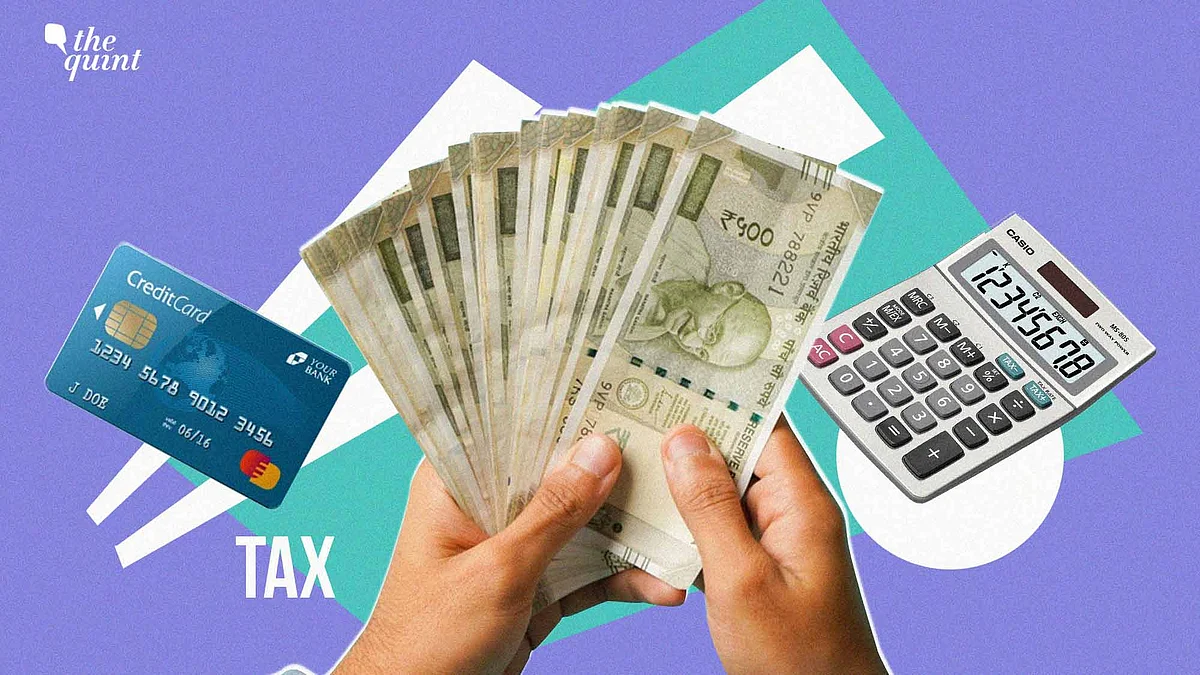
To Save or to Spend? Why Tax Breaks to Middle Class Won't Go Into Consumption
A much bigger impact would have been felt had there been a reduction in the GST, writes Aunindyo Chakravarty.

advertisement
I now have a broad sense of how much money I'll save because of Finance Minister Nirmala Sitharaman’s income tax breaks.
Whatever it is will go into stocks. You can call this the COVID-19 effect. Or, perhaps, it is the fact that I don’t earn as much as I used to. Maybe it is because as a 52-year-old, I'm more aware of the need to save.
Five years ago, when I shopped at a grocery store, I didn’t even look at the sticker price. More often than not, I didn’t even check the final bill. I just handed over my credit card to the person at the counter. The unsaid logic was that you could throw any bill at me, my income would cover it by a mile. And so, I cared about my annual pay hike but couldn’t care less about our household expenses.
Now, life has turned me into a quick commerce expert. I load the same basket onto Blinkit, Swiggy, and Zepto – and order from the one that gives me the biggest discount on my total bill. I do the same on food delivery apps. And on e-commerce sites.
I, clearly, am an outlier. But not by too much.
To Save or To Spend?
In fact, it is quite likely that an average 'middle class' person consumes, at best, 40 percent of the extra income they earn. Economists call this the Marginal Propensity to Consume (MPC). A recent study shows that the average MPC in India, over a 30-year period since 1990, was 49 percent. That means, out of every extra Rs 100 earned, Indians spent Rs 49 on consumer goods and services – and saved Rs 51.
It is obvious that the 'middle class' – who actually are in the 96 to 99 percentile – would save a much higher proportion of any additional income they earn. So, my assumption that the 'middle-class' MPC is 40 percent, is pretty reasonable. This is extremely important for us to gauge the impact of the finance minister’s income tax bonanza on overall consumption.
Those who sell consumer goods and services, will earn that Rs 40,000 crore, and they will spend a part of it on consumption as well. This chain will go on endlessly, till the amounts spent become increasingly negligible.
This process is known as the consumption multiplier, because the effect of the original boost to consumption gets multiplied several times over. There is a simple formula to estimate how much the total impact will be – 1/(1-MPC).
Since, MPC is 40 percent, the consumption multiplier in this case is 1.67. That means, the Rs 40,000 crore of additional consumption by the ‘middle class’ will result in an overall extra consumption of roughly Rs 67,000 crore. That is peanuts compared to the total household consumption expenditure in India at just 0.2 percent.
But what if we compare it to the sales of the top 25 companies in each of the three key consumer goods sectors – FMCG (Fast Moving Consumer Goods), consumer durables, and automobiles?
Their aggregate sales in 2023-24 was Rs 14,00,000 crore. If we assume that their sales normally grow at an average of 10 percent per year, it will rise to about Rs 17,00,000 crore by 2025-26. Remember, we had calculated that the income tax sops will result in an overall consumption boost of Rs 67,000 crore. That will add 5 percent to the total sales of the biggest consumer goods companies in India.
The Credit Card Theory
Is the tax bonanza really as big a game-changer as some pundits are claiming it to be?
This is because lower GST impacts us right at the point of consumption. It doesn’t have to wait for income to get converted into consumption. We know this from our everyday experience in times of high inflation. You pick up a pack of cheese, see the price, and put it back.
You have instinctively, almost by reflex, reacted to a psychological price threshold that you are not willing to cross. If a GST cut brought that cheese under the threshold, you would buy it. You are induced to spend more at the point of purchase.
It is somewhat similar to the psychological impact of credit cards on consumers. If you only used cash, you would be limited by the amount in your wallet. A credit card allows you to cross that threshold by letting you buy much more. If you had to go to an ATM and withdraw cash to make the same purchase, you might decide not to buy it.
Why Not Reduce GST Instead?
The budget estimates that the Centre’s share of GST will be Rs 11.8 lakh crore in 2025-26. Going by past trends, this suggests the total GST collections will be about Rs 24 lakh crore. Estimates suggest that household consumption accounts for about one-third of GST collections. That would be about Rs 8 lakh crore.
This would have brought down the GST impact on households by 12.5 percent – and immediately lowered the retail prices of things that we buy. That would have had a higher multiplier effect on consumption than income tax sops.
It would have also cooled down inflation, and reduced inflation expectations, giving the Reserve Bank of India a chance to reduce interest rates. It would have also benefitted a wider range of people than just the 'middle class'.
(The author was Senior Managing Editor, NDTV India & NDTV Profit. He tweets @Aunindyo2023. This is an opinion piece. The views expressed above are the author’s own. The Quint neither endorses nor is responsible for them.)
- Access to all paywalled content on site
- Ad-free experience across The Quint
- Early previews of our Special Projects
Published: undefined